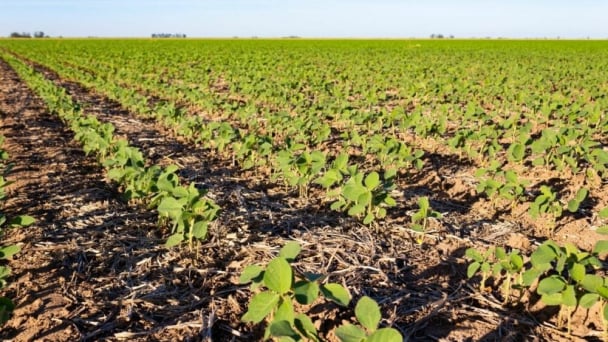May 19, 2025 | 22:49 GMT +7
May 19, 2025 | 22:49 GMT +7
Hotline: 0913.378.918
May 19, 2025 | 22:49 GMT +7
Hotline: 0913.378.918
International food commodity prices declined in August, led by staples other than rice and sugar, the Food and Agriculture Organization of the United Nations (FAO) reported today.
The FAO Food Price Index, which tracks monthly changes in the international prices of globally-traded food commodities, averaged 121.4 points in August, down 2.1 percent from July and as much as 24 percent below its March 2022 peak.
The FAO Vegetable Oil Price Index decreased by 3.1 percent in August, partly reversing a sharp 12.1 percent upward move in July. World prices of sunflower oil declined by nearly 8 percent during the month amid weakening global import demand and abundant offers from major exporters.
World quotations for soy oil dropped owing to improving soybean crop conditions in the United States of America, while those for palm oil fell moderately amid seasonally rising outputs in leading producing countries in Southeast Asia.The FAO Cereal Price Index declined by 0.7 percent from July.
International wheat prices fell by 3.8 percent in August amid higher seasonal availabilities from several leading exporters, while international coarse grain prices fell by 3.4 percent amid ample global supplies of maize from a record harvest in Brazil and the imminent start of the harvest in the USA.
In stark contrast, the FAO All Rice Price Index rose by 9.8 percent from July to reach a 15-year nominal high, reflecting trade disruptions in the aftermath of a ban on Indica white rice exports by India, the world’s largest rice exporter.
Uncertainty about the ban’s duration and concerns over export restrictions caused supply-chain actors to hold-on to stocks, re-negotiate contracts or stop making price offers, thereby limiting most trade to small volumes and previously concluded sales.
The FAO Dairy Price Index declined by 4.0 percent from July, led by international quotations for whole milk powder, in abundant supply from Oceania. International butter and cheese prices also dropped, due in part to lackluster market activities associated with the summer holidays in Europe.
The FAO Meat Price Index dipped by 3.0 percent. World ovine prices fell the most, underpinned by a surge in export availabilities mainly from Australia and weaker demand from China. Robust supplies also nudged downwards the prices of pig, poultry and bovine meats.
The FAO Sugar Price Index rose by 1.3 percent from July, averaging in August as much as 34.1 percent higher than its value a year ago. The increase was mainly triggered by heightened concerns over the impact of the El Niño phenomenon on sugarcane crops, along with below-average rains in August and persistent dry weather conditions in Thailand.
The large crop currently being harvested in Brazil limited the upward pressure on international sugar quotations, as did lower ethanol prices and the weakening of the Brazilian Real.
Global cereal production forecast to match past recordFAO also released a new Cereal Supply and Demand Brief, which forecasts that world cereal production in 2023 will increase by 0.9 percent from the previous year to reach 2 815 million tonnes, on par with the record output realized in 2021.
While global wheat production is set to decline by 2.6 percent from 2022, coarse grains total output is forecast to rise by 2.7 percent, with maize production seen reaching a new record of 1 215 million tonnes, buoyed by strong yields in Brazil and Ukraine.
Despite a slight downward revision since July, world rice output in 2023/24 is still seen recovering by 1.1 percent from the previous season.
World cereal utilization in the season ahead is forecast at 2 807 million tonnes, 0.8 percent above the 2022/23 level.World cereal stocks at the close of 2023/24 marketing seasons are predicted to stand at 878 million tonnes, a 2.2-percent annual increase, pointing to a world stocks-to-use ratio for cereals of 30.5 percent, which FAO deems an “overall comfortable global supply level from a historical perspective.
”World rice stocks are forecast to reach an all-time high of 198.1 million tonnes, driven up by India which together with China are estimated to hold nearly three quarters of this volume, like in previous seasons. Aggregate rice reserves held by the rest of countries are seen ending the year with a second successive contraction to a four-year low pegged at of 51.4 million tonnes.
FAO lowered its forecast for world trade in cereals in 2023/24 to 466 million tonnes, a 1.7 percent drop from the previous marketing season. Traded volumes of wheat and maize are all predicted to decline, due to a mix of reasons, including falling exports by Ukraine due to trade disruptions associated with the ongoing war.
FAO has also lowered its forecast for world trade in rice from the July figure considering the stepped-up export restrictions by India. Although the duration of these restrictions and their extent of application are uncertain, if protracted and if El Niño induces production constraints in other Asian exporters, they could keep the predicted recovery in 2024 trade in rice modest, FAO said.
(Fao.org)

(VAN) Fourth most important food crop in peril as Latin America and Caribbean suffer from slow-onset climate disaster.

(VAN) Shifting market dynamics and the noise around new legislation has propelled Trouw Nutrition’s research around early life nutrition in poultry. Today, it continues to be a key area of research.

(VAN) India is concerned about its food security and the livelihoods of its farmers if more US food imports are allowed.

(VAN) FAO's Director-General emphasises the need to work together to transform agrifood systems.

(VAN) Europe is facing its worst outbreak of foot-and-mouth since the start of the century.

(VAN) The central authorities, in early April, released a 10-year plan for rural vitalization.

(VAN) Viterra marked a significant milestone in its carbon measurement program in Argentina, called Ígaris, reaching 1 million soybean hectares measured.